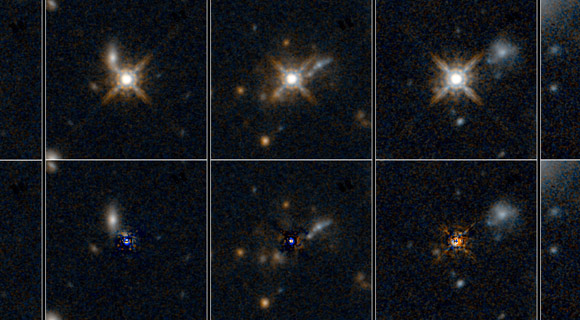
What was happening in the universe 12 billion years ago? The universe was smaller and so crowded that galaxies collided with each other much more frequently than today. Hubble astronomers looked at dusty quasars where their glow was suppressed by dust, allowing a view of the quasar’s surroundings. Credit: NASA/ESA
Using the Hubble Space Telescope, astronomers uncover the mysterious early formative years of quasars and unveil chaotic collisions of galaxies that fuel quasars by feeding supermassive central black holes with gas.
“The Hubble observations are definitely telling us that the peak of quasar activity in the early universe is driven by galaxies colliding and then merging together,” said Eilat Glikman of Middlebury College in Vermont. “We are seeing the quasars in their teenage years, when they are growing quickly and all messed up.”
Discovered in the 1960s, a quasar, contraction of “quasi-stellar object,” pours out the light of as much as one trillion stars from a region of space smaller than our solar system. It took more than two decades of research to come to the conclusion that the source of the light is a gusher of energy coming from supermassive black holes inside the cores of very distant galaxies.
The lingering question has been what turns these brilliant beacons on, and now Hubble has provided the best solution. “The new images capture the transitional phase in the merger-driven black hole scenario,” Glikman said. “The Hubble images are incredibly beautiful.”
“We’ve been trying to understand why galaxies start feeding their central black holes, and galaxy collisions are one leading hypothesis. These observations show that the brightest quasars in the universe really do live in merging galaxies,” said co-investigator Kevin Schawinski of the Swiss Federal Institute of Technology Zurich.
The overwhelming glow of the quasar drowns out the light of the accompanying galaxy, making the signs of mergers difficult to see. Glikman came up with a clever way to use Hubble’s sensitivity at near-infrared wavelengths of light to see the host galaxies by aiming at quasars that are heavily shrouded in dust. The dust dims the quasar’s visible light so that the underlying galaxy can be seen.
The gravitational forces of the merger rob much of the angular momentum that keeps gas suspended in the disks of the colliding galaxies. As galaxies merge, gravitational forces cause the gas in the disks of the colliding galaxies to fall directly toward the supermassive black hole. The accretion zone around the black hole is so engorged with fuel it converts it into a gusher of radiation that blazes across the universe.
Glikman looked for candidate “dust-reddened quasars” in several ground-based infrared and radio sky surveys. Active galaxies in this early phase of evolution are predicted to glow brightly across the entire electromagnetic spectrum, making them detectable in radio and near-infrared wavelengths that are not as easily obscured as other radiation.
She then used Hubble’s Wide Field Camera 3 to take a detailed look at the best candidate targets. Glikman looked at the dust-reddened light of 11 ultra-bright quasars that exist at the peak of the universe’s star-formation era, which was 12 billion years ago. The infrared capability of Hubble’s Wide Field Camera 3 was able to probe deep into the birth of this quasar era.
The Hubble Space Telescope is a project of international cooperation between NASA and the European Space Agency. NASA’s Goddard Space Flight Center in Greenbelt, Maryland, manages the telescope. The Space Telescope Science Institute (STScI) in Baltimore conducts Hubble science operations. STScI is operated for NASA by the Association of Universities for Research in Astronomy, Inc., in Washington, D.C.
Reference: “Major Mergers Host the Most-luminous Red Quasars at z ~ 2: A Hubble Space Telescope WFC3/IR Study” by Eilat Glikman, Brooke Simmons, Madeline Mailly, Kevin Schawinski, C. M. Urry and M. Lacy, 18 June 2015, The Astrophysical Journal.
DOI: 10.1088/0004-637X/806/2/218
arXiv: 1504.02111

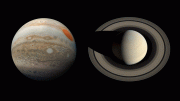

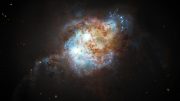
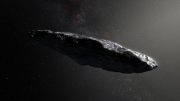
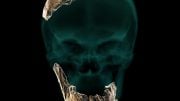

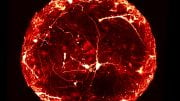
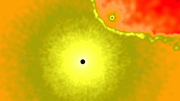
By definition, (stars) objects that comprise “galaxies” (or QSOs) DO NOT COLLIDE. Therefore these systems do not “collide.” Use the term Dark Entropy if “fission” is too simplistic.
“the merger fraction of their AGN hosts is consistent with merger-driven models” and Brooke Simmons is a co-author of this paper. She is best known for “fake” AGN classifications at the Galaxy Zoo. After that episode and the collapse of the GZ Forum, she banned a classifier for not yielding to her demands to discuss objects as “merger”-types – is this what the author refers to as “modelling”? There are still “moderators” at the Zoo who disinform, stalk and harass classifiers.
12 billion and there were already so many fully formed galaxies that they fed quasars?